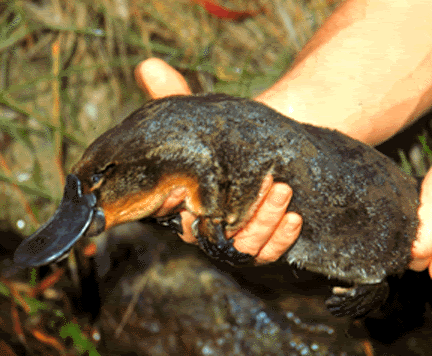Prehistoric Beaver!

Chinese discover fossilized skeleton of creature with fur and flat, scaly, paddle-shaped tail
More than 164 million years ago, when dinosaurs dominated the Earth, a small beaver-like creature with a tail most Canadians would recognize was holding its own in world of Jurassic giants.
The discovery in China of a fossilized skeleton of a creature with a flat, paddle-shaped tail is significant because, until now, scientists believed the mammals that lived alongside the dinosaurs were tiny, shrew-like generalists.
This animal, with webbed hind feet, strong arms for digging and otter-like teeth, shows that mammals became highly specialized long before the dinosaurs disappeared 65 million years ago.
"We now know that early mammals are really far more diverse. They got into the water. They were good diggers. Previously, we thought this would be possible only with far more advanced mammals," says Zhe-Xi Luo, curator of vertebrate paleontology at the Carnegie Museum of Natural History in Pittsburgh.
He and his colleagues named it Castorocauda lutrasimilis, but say the animal isn't the direct ancestor of the North American beaver or European beavers. Dr. Luo says its line appears to have died out long before the ancestors of modern beavers emerged, about 25 million years ago.
It caught and ate fish, and had molars that resemble those of modern seals or otter. Canadian beavers are vegetarians, they eat trees and shrubs, and their buck teeth can gnaw through a tree.
The ancient beaver-like creature also had a poisonous spur on its ankle, similar to the one a modern platypus has on both legs.
"Its lifestyle was probably very similar to the modern-day platypus," says Dr. Luo, who published his findings in today's edition of the U.S. journal Science. "It probably lived along river or lake banks. It doggy-paddled around, ate aquatic animals and insects, and burrowed tunnels for its nest."
But its scaly tail was remarkably similar to that of a modern beaver, and appears to have been used in the same way, helping to propel it through the water. The creature may have even slapped it on the surface to warn family members that a meat eater was coming.
Dr. Luo said Canadians should be proud and amused that a national symbol has such an ancient look-alike. ("Is it true you have a beaver on your money?" he asked.)
The fossil was found by peasants in a lake bed in Inner Mongolia, he said. They took it to the Northern Jinzhou Museum of Paleontology, which let him examine it. He is planning an expedition to the region this summer, and hopes to discover other previously unknown Jurassic mammals.
Dr. Luo is an expert in ancient mammals. Five years ago, he was part of a team that identified the closest known relative of modern mammals, a shrew-like creature that weighed no more than a paper clip and lived 195 million years ago.

2 Comments:
Prehistoric beaver?
Sounds like Joan Rivers.
Am I right, folks?
Is this thing on?
That straight line has been sitting there for almost a week and it took this long for someone to run with it!
Post a Comment
<< Home